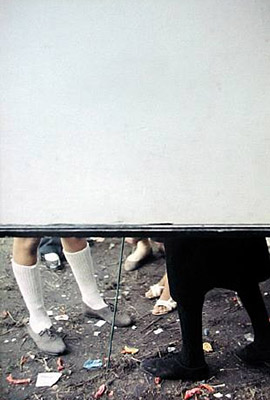Nominate a Photo Icon Assignment
Hans-Michael Koetzle writes in Photo Icon: The Story Behind the Pictures that a photo icon “is a key image from the history
of the medium: images that have pushed photography forward in terms of either its technology, aesthetics,
or social relevance.”
Make a case for the photograph that you have chosen as a “photo icon” by combining images, text, references, articles,
and links to support your claim.
Blog Post Guidelines
Your blog post should include:
» Title // Be intentional in choosing a title.
» Photos // Should be embedded in the post. Be intentional with the placement of the photos. Does the text wrap around? What size is most effective? Do you want a border? How do you use the layout to emphasize the photo icon?
» Text // Describe and provide links to referenced articles and online material (400-600 words).
» Sources Lists // Include references for images you upload, text you reference, text you read, links to any articles mentioned.
» Category // Check box for category “nominate a photo icon”.
» Tags // Add all relevant tags to post.
Research
In the first three decades of the twentieth century Jewish photographers brought a distinctly modernist perspective to the urban scene. Paul Strand in New York, Andre Kertesz in Paris and New York, and Martin Munkacsi in Berlin and New York all produced iconic images. Read the essay on Paul Strand’s “Blind Woman” by Koestle and the essay on Andre Kertesz’s “Meudon” by Koestle. Then look at the photographs from Strand, Kertesz, and Munkacsi and choose one that you think is particularly powerful. Then reread the criteria for analysis of a photograph in Orvell (pages 13-15 here). Remember that Orvell says that an image has multiple meanings, depending on “context and purpose.”
You should consider:
» The photographer’s personal history, including his Jewishness
» The social or commercial matrix for the photograph
» The photo’s semiotic context and aesthetic composition
» The “career” of the photo
» How did the meaning and use of the photo change over time? Where and how is it used online today?
Are there photos by other artists that were influenced by this photo?
Make a case for the photograph that you have chosen as a “photo icon.” 400-600 words. If you wish to choose a
different photograph, you may, but first look at the photographs in Hostetler. Most of them are photos taken by Jewish
photographers. If you are not interested in any of those photos, consider an image by Robert Frank from The Americans.
Finally, if you want to choose a different photograph, please check with me first to make sure that the photographer is Jewish
and that the photograph is appropriate.
Suggested ways to use media:
Embed additional images
» Photos you reference
» Photos influenced by the photo icon
» Artists’ work influenced by the photo icon
Links, images, and embedded material to illustrate photographer’s personal history
» Maps – embed interactive maps of the location i.e. “New York 1940s map”, google maps (street view, satellite,
directions between locations), old illustrated maps, street maps, street corner signs
» Video – experimental videos, interviews with the photographer, critics discussing photographer’s work, short clip from
a documentary about the artist
» Audio – interview, critics, influential music, clips from radio story about artist
How is the photograph currently used online?
» Consider using screenshot or iframe, and link to it.
Reading List
Hans-Michael Koetzle, “Paul Strand: Blind Woman, 1916,”
Photo Icons: The Story Behind the Pictures I: 168-175.
Hans-Michael Koetzle, “André Kertész: Meudon, The Poetry
of the Street,” Photo Icons: The Story Behind the Pictures, II:
8-17.
Milton Brown, “An Interview with Paul Strand, 1971”
[excerpt] in Photography in Print, ed. Vicki Goldberg (1981),
288-290.
Paul Mendes-Flohr, “The Berlin Jew as Cosmopolitan,” in
Berlin Metropolis: Jews and the New Culture 1890-1918, ed.
Emily Bilski (1999), 14-31.
Martin Munkacsi, Aperture monograph, biographical profile
by Susan Morgan, pp. 1-4, 46-51.















Comments are closed.